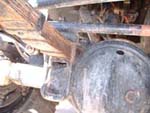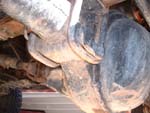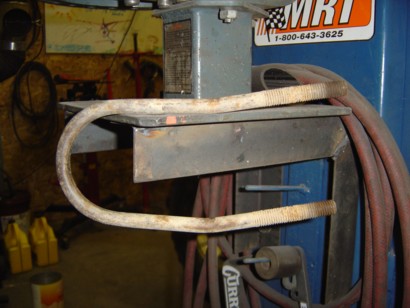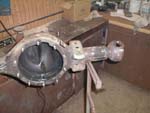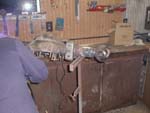
Spring Perch Ideas and Options Because you are relocating the springs above the axles, you’ll need to buy or make some new spring perches (or “pads” they are sometimes called) for your springs to rest on. There are a number of options for perches out there. Ironically enough, Toyota axles are right about the same diameter as a Dana 60 and a good number of other axles out there. The common Dodge part number #P4120074, about $12 per box, 1 pair in each box, which you can order through your local Dodge/Mopar dealer. You’ll need two boxes. Some people have complained they aren’t “strong enough.” They are about a 1/4” thick and are as strong as any other perch out there. Bending them is probably do to excessive horsepower and lack of traction control (see Axle Wrap later in the article). Proffitts Cruisers also makes a good spring perch that is about $30 a pair with three different holes drilled in them so you can move your axle further forward or backward according to how much wheel base you want. If you consider some of the Fords out there that you sometimes see with big lift blocks put between the spring and the axle, you can see how increasing the height of your perch can also increase your lift. But this is at the cost of possible spring wrap (see section later in article). Ideally, if you do not want to run a traction bar, and you are trying to keep your lift as small as possible, use the most “shallow” perches you can find. Both Proffitts and the Dodge perches are pretty much as shallow as can be. They will also work with any variation of Cruiser spring on any Cruiser axle. The Dodge perches are a bit narrow for FJ60 springs, but I’ve used them on 60’s with no problems. Because of where the passenger side front perch will need to be, you will need to grind out some of the inside side of the perch to have it fit. You should grind enough so that the perch should sit pretty much 100% level. On FJ55 models, though in every other instance they are the same axle as a FJ40, there is a little plate that is designed to keep the u-bolts in place in the stock position. You’ll have to grind those off too. FJ60s have a metal ubolt hanger because they use unique, square u-bolt in the front. Some people have used these as perches for their spring overs with varying degrees of sucess. They are strong enough to hold the hold the weight, however they are not long enough to adaquately prevent axle wrap since it is only a 2" x 2" square. You might be able to use them if using a traction bar, but it is not recommended. You can also only use these if you are not cutting and turning or if you plan to reuse the pads in the Spring Over position, inverted, as seen in the photos below. This is a good way to get around having to bend the front, inner u-bolt if you cut and turn your front housing. This is Kurt William's rig, who owns Cruiser Outfitters. This rig also runs FJ60 axles. A front u-bolt, bent, to
compensate for a cut-and-turned axle housing:
When you weld your perches on, you want bare metal touching bare metal when the perches rest on the axles, so you will get a better weld. The perch should stay level even if turning as much as 18 degrees. If that is the case, you will need to do more grinding on the inside of your axle perch. Brian Swearingen's front
axle housing with Mopar perches ground down and welded on:
Next page:
|
